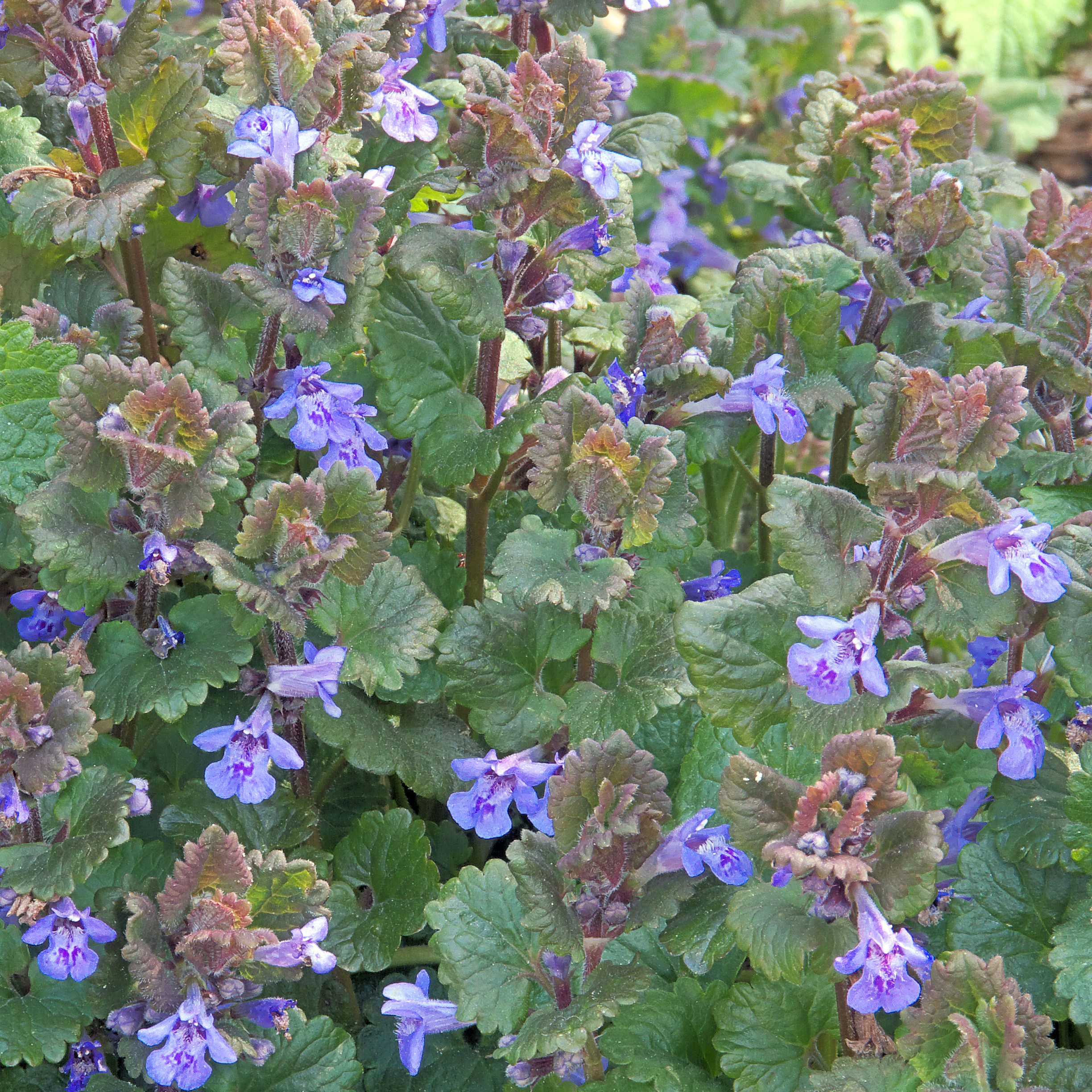Creeping charlie is so pretty. Why does it also have to be so pesky? Here’s how to get it under control.

Can you believe that creeping charlie was once touted an excellent, fast-growing groundcover. Ha! It’s fast-growing alright!
But you have to admit—with its little purple flowers and round, shiny leaves, it’s pretty, too. Still, don’t be tempted. It’s a bully and if left unchecked, it will choke out grass, annuals and smaller perennials, and race its way into every part of your yard.
Overall Tips for Controlling Creeping Charlie:
• One way to deal with creeping charlie is to give it more light. It’s a shade-lover and if you trim up trees or find other ways to provide light, it will help thin it out and maybe even eradicate it.
• Don’t hoe creeping charlie. Little bits that are left in the soil will regenerate. (And avoid tilling if you can.) It’s best to either completely destroy creeping charlie with chemicals (in grass) or to pull it out with a ground rake or hand weeding tool.
• Keep it up. Creeping charlie is seldom eradicated in one year. It takes staying on top of it throughout the season and over a period of a few years to really get rid of it.
That said, the best way to further attack creeping charlie depends on whether it’s in a lawn or in a bed or border, where you have to worry about hurting other plants.
Dealing with Creeping Charlie in a Lawn:
• As with all lawn weeds, the best way to control creeping charlie is to follow good basic lawn care. Thick, healthy grass will crowd out weeds. To that end, if you are trying to grow grass in an area that is too shady and turf struggles, consider planting shade-loving plants, such as hostas or vinca, instead. They’ll crowd out creeping charlie better than weak grass.
• In small areas, use a ground rake to pull out as much creeping charlie as possible.
• A broadleaf herbicide that you use for other lawn weeds also works on creeping charlie. This is usually applied in the fall. (Click here for a listing of what to do when to care for your Iowa lawn.) Mid to late autumn, after the first frost, is an ideal time.
• If you are REALLY determined to get rid of creeping charlie, also treat it in spring. Apply a broadleaf herbicide containing salt of dicamba (3, 6-dichloro-o-anisic acid) or triclopyr (or just read the label to see if it kills creeping charlie.) Wait until the creeping charlie is flowering because it’s then at its most susceptible.
• And if you are really, really determined, apply the broadleaf herbicide a second time in spring. Follow package directions on timing the follow-up spring application.
Controlling Creeping Charlie in a Bed or Border:
• The herbicides you can use on lawns to kill creeping charlie will hurt non-grass plants, such as flowers or shrubs, so you have to use different strategies in areas that aren’t lawn.
• Pull it out. Use a weeder or hand cultivator to pull out as much creeping charlie as possible. Go back in a couple of days and pick out all the little bits that broke off or you missed. Those tiny bits will regenerate.
• Mulch well. After weeding, mulch with 2 to 3 inches (never more) of a wood chip or other mulch. It will help suffocate the little bits left in the soil and will make it more difficult for any creeping charlie that does get through to root in the soil.
Note: Borax has been touted as an organic control for creeping charlie, but university research shows that borax isn’t very effective and can hurt other plants, too.
Other Links Of Interest:
Should I Let My Lawn Go Dormant?
Please do not use text, photos, or illustrations on this web page, web site, or newsletter without express permission from The Iowa Gardener. Many materials are copyrighted and reuse is violation of that copyright. Click here to request permission to use. Thank you!